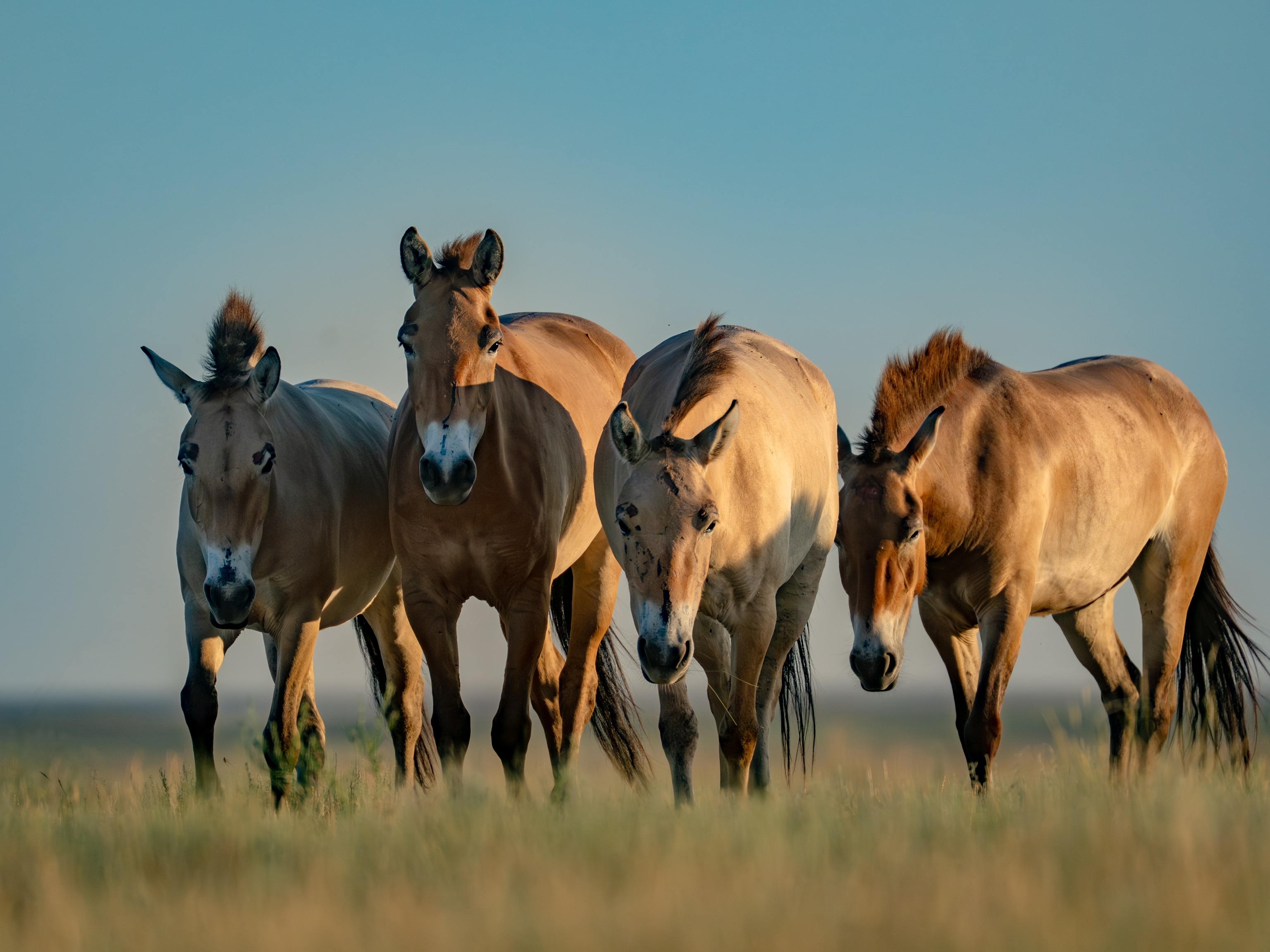Humans have a long history of digging wells, but we're not the only species to tap the earth for water: New research reveals wild horses and donkeys, also known as burros, can as well.
As described in a paper published April 29 in the journal Science, the animals use their hooves to dig more than six feet deep to reach groundwater for themselves, in turn creating oases that serve as a boon to wildlife—American badgers, black bears, and an array of birds, including some declining species such as elf owls.
Horses and burros, introduced into the wild over the centuries, have taken up residence in scattered populations throughout much of the American West. The wells they dig transform into “hotbeds of animal activity,” says Erick Lundgren, a postdoctoral researcher at Aarhus University in Denmark and the study’s first author.
Watching the wells
Over the course of three summers, researchers set up camera traps to observe wildlife at four sites in the Sonoran desert, in western Arizona, and at one site in the Mojave Desert near Baker, California, all in seasonal riverbeds. Donkeys frequented and dug wells at four locations, while horses did the same at another; both species are capable diggers that shovel sand and gravel backward, mainly with their front hooves.
The scientists found that a total of 57 species came to these equine-created wells to drink: raptors, such as red-tailed hawks and Cooper’s hawks; smaller birds such as yellow warblers, hooded orioles, and scrub jays; large mammals such as mule deer, bighorn sheep, and badgers; and even Colorado river toads.
They also set up cameras at nearby spots without wells, to serve as scientific controls and determine the influence of the wells in drawing wildlife. The species richness observed at these wells was 64 percent higher than at the control sites, suggesting the animals intentionally visited the equine-made wells. The researchers also mapped open-water sources in the areas surrounding their study sites, and found that the well-digging equines increased accessible surface water density by up to 14-fold.
They also found willows and cottonwoods germinating at some wells, suggesting these spots could serve as nurseries for these critical—and dwindling—desert trees.
“It’s really cool these researchers actually quantified how much water [the horses and donkeys] are putting on the landscape and how it’s distributed,” says Michael Bogan, an aquatic ecologist at University of Arizona who wasn’t involved in the study.
The behavior fits the definition of “ecosystem engineering,” a phenomenon whereby wildlife alter their environment, Lundgren says. A better known example is how beavers make ponds that enhance species diversity, raise the water table, help prevent wildfires, and more.
Although this is the first comprehensive study of desert well-digging, the behavior has been observed among wild horses in northern Queensland, Australia, and on Sable Island, in Canada; wild donkeys in southern Australia; wild asses in the Gobi Desert; and several other species, including coyotes and African elephants.
Bogan suspects the behavior is widespread in deserts with loose sand or gravel and where water is buried at a relatively shallow level. He’s seen it himself among burros in Mexico’s El Pinacate y Gran Desierto de Altar Biosphere Reserve, just south of the Arizona border.
In the same region, I saw firsthand how it’s possible to dig for water when in need. On assignment near Arizona’s San Pedro River, I spotted a shimmery green beetle that looked like a jewel. Known as fiery searchers, these predators scurry about hunting and devouring caterpillars. After I gently picked it up, it doused my hand in a foul-smelling chemical. Too far removed from any faucet, I had to improvise. So I dug into the dry riverbed about a foot, until I hit water, and was able to wash the scent away.
Appreciating wild horses
In the Pleistocene, more than 10,000 years ago, a handful of equine species lived throughout North America, including small horse-like animals and camels, but later went extinct, Lundgren says. He believes that today’s wild horses may be contributing ecosystem services once performed by these ancient animals.
That’s just one reason to re-evaluate how we view burros and horses, which are often wrongly denigrated because they’re not strictly native, he says. The U.S. Bureau of Land Management (BLM) manages the wild population of around 90,000 burros and horses, which the agency and others have sought to control by lethal means in the past. The federal government also holds another 50,000 in corrals throughout the West at great expense, a move originally intended to curb wild populations. (Read more about the controversy around wild horses in the U.S. West.)
Wayne Linklater, a wildlife biologist and chair of the environmental studies department at California State University, Sacramento, agrees that the study invites a new look at such species.
“Even though they are introduced, they are performing a really important ecological function,” Linklater says, and yet the BLM wants to reduce their numbers.
“This paper is very challenging to those traditional conservationists,” he says,“who want to see all introduced species as somehow invasive and alien.”





